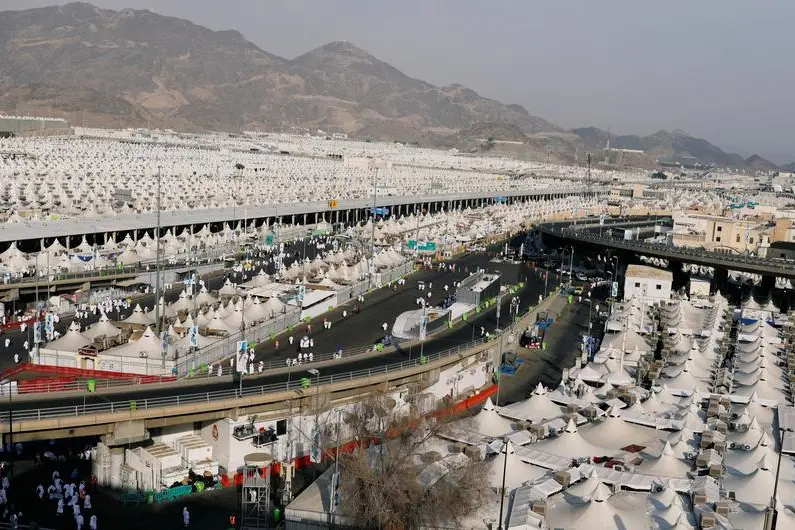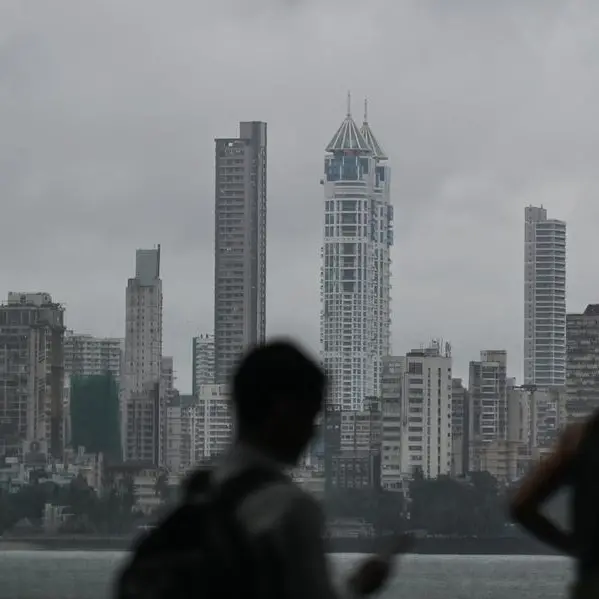PHOTO
MAKKAH — Hundreds of thousands of pilgrims, in white seamless ihram dress, began their slow and steady trek to the tent city of Mina on Thursday night in the first leg of their 5-6 day Hajj pilgrimage. The holy city of Makkah reverberated with chants of “Labbaik Allahumma Labbaik” (O God, here I am answering your call) as more than 1.5 million pilgrims from around the world readied themselves for what is described as once in a lifetime journey of faith. A large number of domestic pilgrims joined them in pursuit of their spiritual salvation through performing the obligatory ritual of Hajj, the fifth pillar of Islam.
The pilgrims will spend the Tarwiah Day on Friday, Dhul Hijjah 8, in the sprawling tent city, marking the beginning of this year’s Hajj. They will spend the Tarwiyah Day in prayers and meditation in their tents in preparation for Saturday’s standing at Arafat, the pinnacle of the annual pilgrimage of Hajj. In Mina, located 7 km northeast of the Grand Mosque, the pilgrims pray Dhuhr, Asr, Magrib, Isha and Fajr prayers. They shorten Dhuhr, Asr and Isha prayers to two Rakaats, following the tradition of the Prophet (peace be upon him).
Mina is located between Makkah and Muzdalifah, seven kilometers northeast of the Grand Mosque. Situated within the boundaries of the Haram, Mina is a valley surrounded by mountains on both the northern and southern sides. It is only inhabited during the period of Hajj. It is bordered by Jamrat Al-Aqaba on the side of Makkah, and by Wadi Muhasser on the side of Muzdalifah.
The Saudi authorities have mobilized all their human and material resources to make the pilgrimage hassle-free and a great success. As per the instructions of Custodian of the Two Holy Mosques King Salman and Crown Prince and Prime Minister Mohammed bin Salman, all the concerned ministries, government departments, security agencies and tawafa organizations are well prepared to make available of the best possible facilities and services for the pilgrims. The logistics required to support the millions of pilgrims are astounding.
The security authorities have completed all their flawless preparations to ensure the safety of pilgrims and security of the Hajj operation.
This year Kidana Company implemented the advanced, multi-storey residential towers, namely Kidana Al-Wadi in Mina. The 10 residential towers have the capacity to accommodate more than 30,000 pilgrims with modern designs inspired by the urban identity of the Holy Sites that aimed to improve the urban landscape and provide an exhilarating experience for the guests of God. The company implemented the Kidana Al-Wadi project within nine months in partnership with the private sector.
The Mashaer Train has completed its preparations at nine stations spreading along the Holy Sites of Mina, Muzdalifah and Arafat, connected by a double rail road with a length of 18 km. The train’s capacity is 72,000 passengers per hour in one direction, and it will operate more than 2,000 trips. It works to facilitate the movement of the guests of God to and from their locations, while the speed of the train reaches 80 kilometers per hour and can cover the distance between Mina and Arafat in approximately 20 minutes.
The Mashaer train fleet consists of 17 trains, and the capacity of one train is 3000 passengers, while the train's seat capacity is 20 percent of its total passengers. It would contribute to transporting more than 350,000 pilgrims between the Holy Sites. The stations were designed according to the number of entry and exit doors for the train. There are 60 doors on each side, as the train contributes to transporting hundreds of thousands of pilgrims in each directions between the Holy Sites.
The Ministry of Environment, Water and Agriculture has mobilized more than 2,000 employees to provide water services for pilgrims. The daily pumping rate exceeds 750,000 cubic meters in Makkah and reaches one million cubic meters at peak times on the Day of Arafat and Eid Al-Adha. The quantities of water storage have reached 3.2 million cubic meters, in addition to implementing about 4,100 daily laboratory tests to ensure the quality of water provided to the pilgrims. The ministry has launched 10 projects worth more than SR158 million to develop infrastructure and support water supply.
The Ministry of Transport and Logistics prepared the flexible rubber asphalt initiative in the pedestrian walkways in the Holy Sites for Hajj this year. These include the road parallel to pedestrian road No. 6 leading to Jabal Al-Rahma in Arafat, and in more than one locations, including the area surrounding the Namira Mosque in Arafat, with a total area exceeding 25,000 square meters, which contributes to reducing the temperature by about 20 percent compared to other roads.
The Saudi Electricity Company has implemented the connection to the mobile stations with a voltage of 110 kV at a cost of SR60 million. This project, which was commissioned on May 31, extends over a network of more than 4 km in length with a total capacity of stations reaching 147 MVA.
Health Ministry, Red Crescent swing into action to serve pilgrims
The Ministry of Health and Saudi Red Crescent Authority have completed all their preparations to extend the best possible medical and emergency services for the pilgrims.
The ministry readied its new Mina Street Hospital with a capacity of 50 beds and a department for heat exhaustion and sunstroke. Special beds have been equipped for the ambulance and emergency department with modern equipment to receive emergency cases. The hospital also has 10 general and specialized clinics, endoscopy department, isolation unit, intensive care unit with a capacity of 16 beds with full medical equipment, dialysis unit with a capacity of four beds, sterilization department, and hospitalization departments. The hospital's laboratory is equipped with the latest modern equipment that gives quick results in record time.
Mina Emergency Hospital has a capacity of about 200 beds, including about 88 beds in the emergency department and 35 outpatient clinics. The hospital has a capacity of 160 beds, of which more than 20 beds have been allocated for sunstroke in anticipation of any expected cases of heat stress and exhaustion. Mina Al-Jisr Hospital has a capacity of 150 beds, including critical care beds, and 40 emergency department beds.
The Health Affairs wing of the Ministry of the National Guard has completed equipping its sites in the Holy Sites through clinics and a center for heat stress and sunstroke in both Mina and Arafat, with the participation of more than 250 employees and health practitioners, including 50 doctors in specialties.
The Saudi Red Crescent Authority is participating in the Hajj service with more than 2,540 emergency and administrative medical personnel, including doctors, specialists, and ambulance and emergency medicine technicians, located among 98 emergency centers in the ports and routes of Hajj, Makkah city, and Grand Mosque. There are nearly 700 field workers with their ambulance fleet, which consists of 320 ambulances, 13 advanced response vehicles, seven air ambulance planes, two medical evacuation planes, 15 motorcycles, and 150 golf carts, 150 electric scooters, in addition to 27 electric bicycles, 10 ambulance buses, and service vehicles in addition to more than 595 volunteers working under the umbrella of the volunteer team in various medical and first aid specialties.
© Copyright 2022 The Saudi Gazette. All Rights Reserved. Provided by SyndiGate Media Inc. (Syndigate.info).























